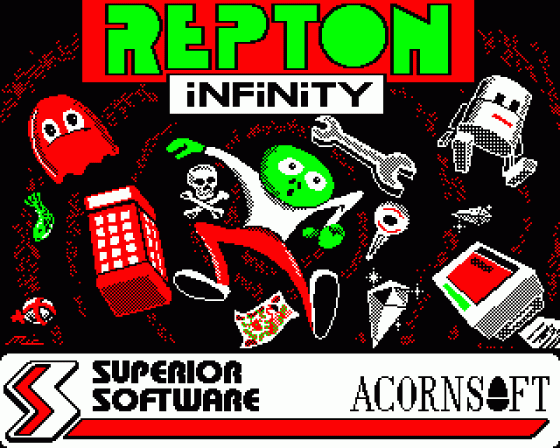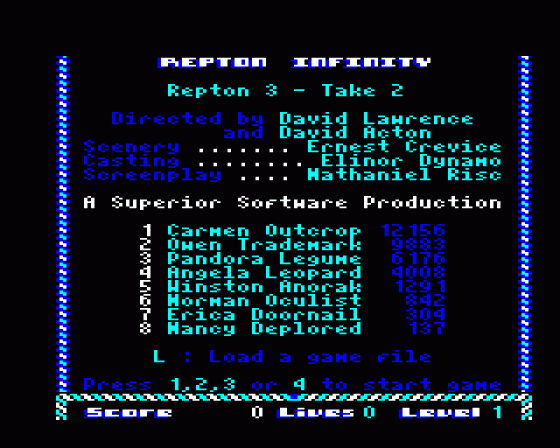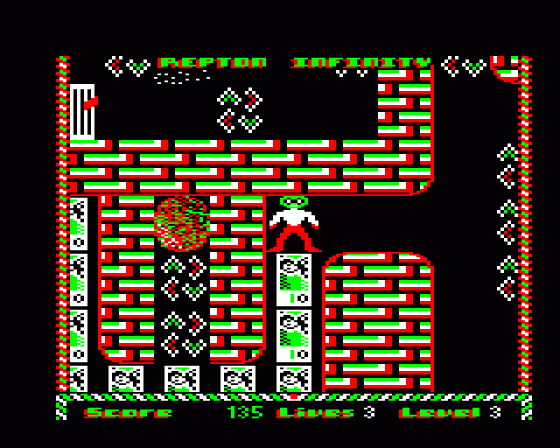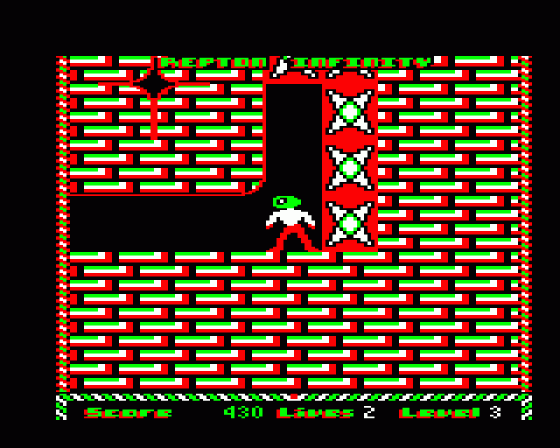
Beebug
 1st January 1989
1st January 1989
Categories: Review: Software
Author: David Spencer
Publisher: Superior/Acornsoft
Machine: BBC B/B+/Master 128
Published in Beebug Volume 7 Number 8
The Story So Far
The original Repton was little more than a slightly non-conformist arcade game. It differed from space invaders and the like because a certain degree of thought and planning was required by the player. It was not enough to simply blast everything in sight.
Repton 2 was very different. Although it looked similar to the original, the new game was in fact a massive logic-puzzle. The object was to move Repton around the landscape collecting diamonds and earth, and killing monsters, while avoiding falling rocks. Some of the speed and action of an arcade game was still present, but so were the problem-solving situations found in adventure games. The puzzle posed by Repton 2 was so challenging that Superior Software offered a substantial prize for the first person to solve it.
Repton 3 was a progression from Repton 2. The same problem-solving and arcade combination were retained, but instead of one large puzzle, there was a series of individual stages, each made up of eight screens. The stages could be attempted in any order, but to complete a stage, each of its screens had to be completed in succession. Major additions included in Repton 3 were character and screen editors. These allowed you to design your own screens, and alter the character to anything you liked. This quickly led to many new sets of screens being produced and marketed as add-ons. However, the behaviour of characters could not be changed, only their appearance. So, for example, rocks still fall if unsupported, even if they were redefined to look like flying saucers.
Roll On Repton Infinity
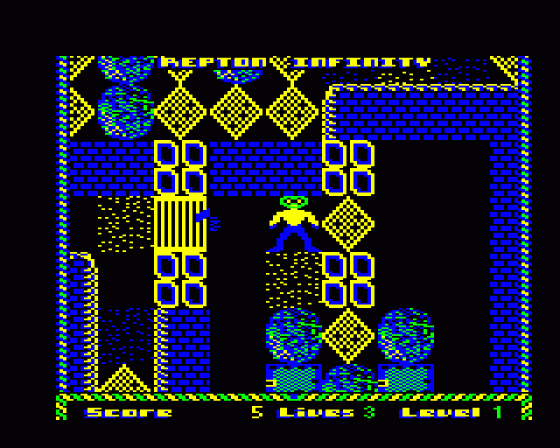
In some ways Repton Infinity, the latest offering from Superior, is a logical progression from Repton 3. The game is still there of course, as are the character and screen editors. However, new to Repton Infinity is the game editor which I shall cover in detail later.
The Repton Infinity package is available for the Model B and Master on cassette or disc, and for the Electron on cassette only. I used the disc version on a Master 128. The software is supplied on three discs. The game disc is a 40/80 track flippy with the standard version on one side, and an enhanced Master version on the other. I will explain the difference later. The other two discs contain the actual game files, and the other files that the editors produce. One of these is a single sided 80 track disc, the other is a 40 track flippy; both contain exactly the same data. The instruction manual is 72 pages long, and there is also a reference card.
When the disc is booted, there is an initial title screen followed by a menu. This offers five options: Play game, Land Scape, Film Strip, Blue Print, and File Link. I will deal with each in turn.

Play Game starts the actual game. There are in fact four different games supplied. The first is a version of Repton 3, while the second, called Repton 4, adds some extra features while still maintaining the same theme. Robbo, the third game, sees you playing a robot in a 'time-space puzzle vortex', while in the fourth game, Trakker, you drive around in a latest hi-tech bulldozer killing hideous 'Jaggas'.
Land Scape is the screen layout editor. This allows a set of four game screens to be created and saved together. Each screen is edited by selecting a character and then using the cursor keys to position it on the screen. Existing screen files can be loaded, and the first four screens of Repton 3 are included to experiment with.
Film Strip is the character definer. Each character in the game actually exists in three forms. There is the large character shown on the playing screen, the small character used when displaying a map of the screen, and an editor character. Editor characters can be loaded into the editors in place of the default set as an aide memoir when editing screen layouts and character definitions.

Blue Print is the game definer, which is the major feature new to Repton Infinity. The behaviour of each character in the game can be defined using a fairly sophisticated programming language called Reptol. The best way to explain this is with an example, namely the definition for a diamond in Repton 3:
NAME Diamond
DEFINE TYPE
CurvedLeft
CurvedRight
DEFINE HITS
IF HITBY Repton
SCORE (5)
SOUND (242)
ENDIF
The first line defines the name of the character, while the TYPE definition specifies certain attributes for that character. 'CurvedLeft' and 'CurvedRight' are flags which are used by the definition of a rock to control how it falls. They basically say that a rock can fall off a diamond to either side. The HITS definition determines what happens when another character hits the diamond. In this case, if the character is Repton himself, his score is increased by five and a 'ping' sound produced.
The action of each character is defined in this way, and Reptol includes some powerful features for effects such as random delays.
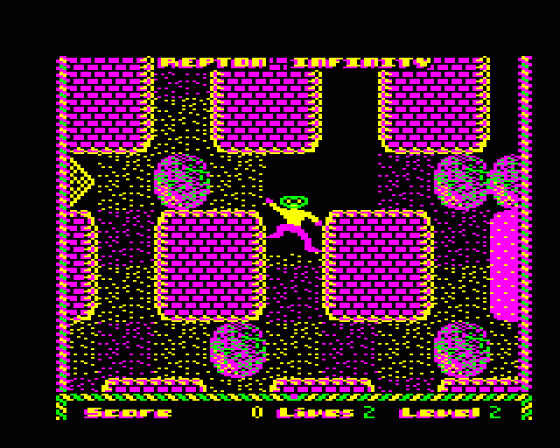
File Link joins the screen layouts, the character designs, and their actions together to form a complete game which can then be saved to disc. On the enhanced Master version, games can be tried without linking and saving them, but linking is compulsory each time on the other versions. This is the only advantage of the enhanced version.
Conclusion
I see Repton Infinity as more than just a game, and indeed as more than just a successor to Repton 3. Repton Infinity provides a programming language in the form of Reptol which, while being fairly easy to learn and use, includes many of the features found in 'real' languages such as C. Add to this the fact that the results of your programming efforts are (hopefully) an enjoyable game, then in my opinion, you have the perfect teaching tool. Pupils in first year IT lessons could be taught Reptol as an introductory language, and could be allowed to develop and try their own games.
You mustn't forget, though, that Repton is primarily a game, and a very good one at that. I am sure that the four games which accompany Repton Infinity will provide hours of pleasure.
Other Reviews Of Repton Infinity For The BBC B/B+/Master 128
Repton Infinity (Superior/Acornsoft)
New game - old face


